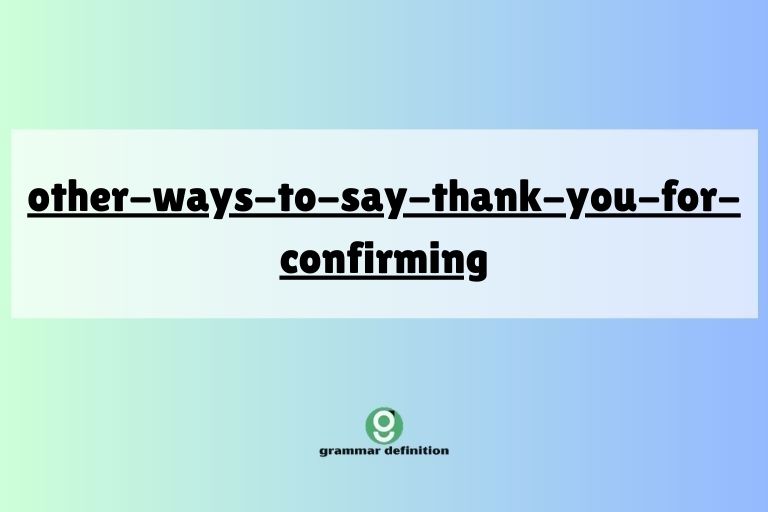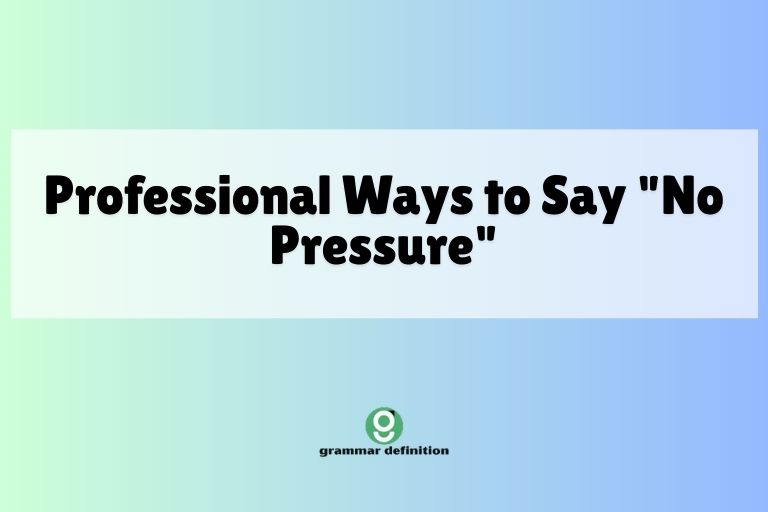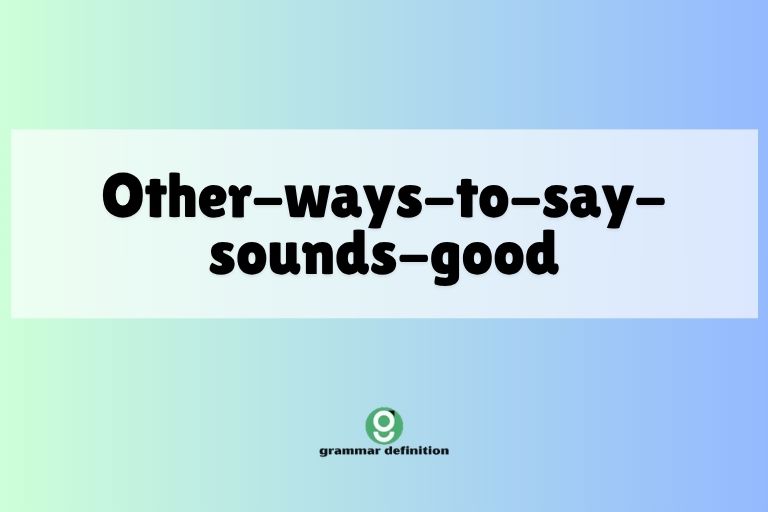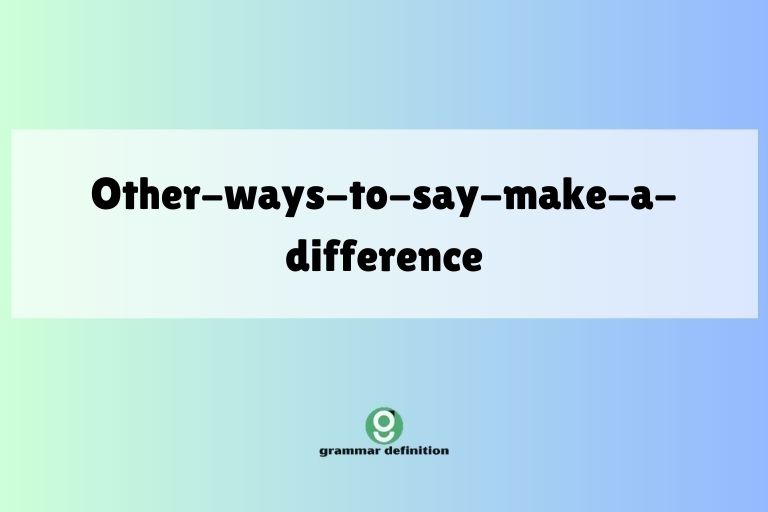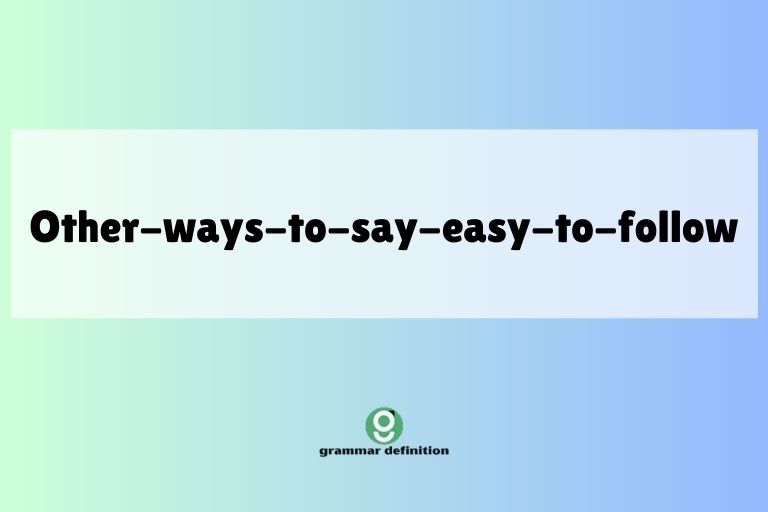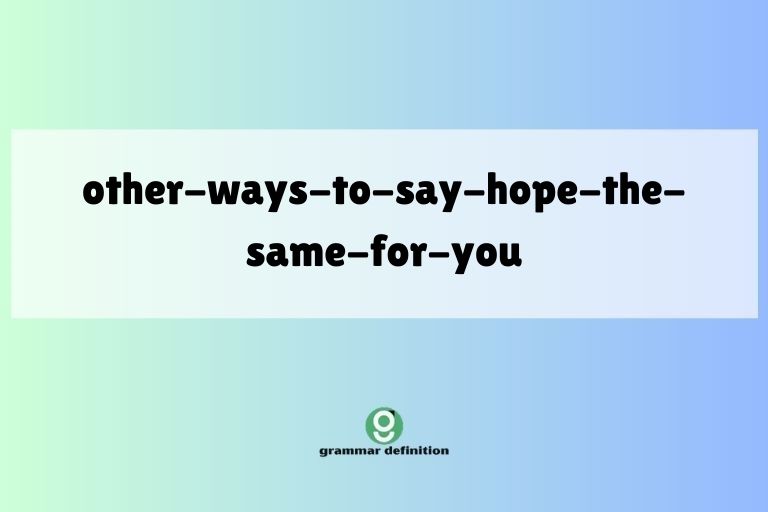Beyond “I’m With You”: Diverse Ways to Express Agreement
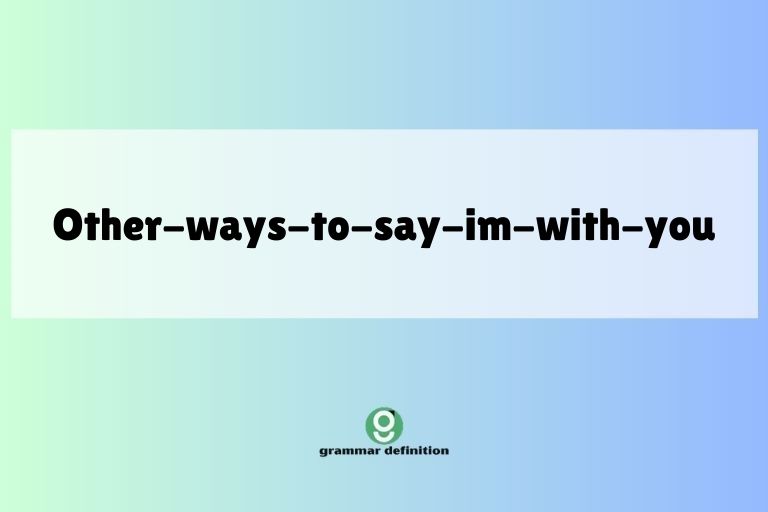
Expressing agreement is a fundamental aspect of communication. While “I’m with you” is a common and straightforward way to show support or concurrence, relying solely on this phrase can limit the richness and nuance of your English.
This article explores a wide array of alternative expressions, providing you with the vocabulary and grammatical structures necessary to convey agreement in various contexts. Whether you’re a student aiming to improve your language skills, a professional seeking to enhance your communication style, or simply someone who enjoys expanding their vocabulary, this comprehensive guide will help you express agreement more effectively and creatively.
Table of Contents
- Introduction
- Definition: Expressing Agreement
- Structural Breakdown of Agreement Phrases
- Types and Categories of Agreement Expressions
- Examples of Agreement Expressions
- Usage Rules and Considerations
- Common Mistakes in Expressing Agreement
- Practice Exercises
- Advanced Topics in Expressing Agreement
- Frequently Asked Questions
- Conclusion
Definition: Expressing Agreement
Expressing agreement involves conveying that you share the same opinion, belief, or sentiment as another person or group. It’s a crucial element of effective communication, fostering understanding and rapport.
Agreement can be expressed in various ways, ranging from simple affirmations to complex statements that acknowledge nuances and reservations. The specific phrase or structure used depends on the context, the relationship between the speakers, and the degree of certainty or enthusiasm being conveyed.
Understanding the nuances of agreement allows you to communicate more precisely and persuasively.
Agreement can be classified based on its strength (strong, moderate, weak), formality (formal, informal), and emotional tone (enthusiastic, hesitant). Each category has its own set of expressions and grammatical structures.
For example, a formal setting might require phrases like “I concur” or “I am in agreement with,” while an informal setting might allow for expressions like “Totally!” or “You got it.” The function of expressing agreement is to signal understanding, build consensus, and move conversations forward. It is also a key component of active listening and collaborative problem-solving.
Structural Breakdown of Agreement Phrases
The structure of agreement phrases can vary widely depending on the expression used. Some common structures include:
- Simple Affirmations: These are the most basic and direct forms of agreement, often consisting of a single word or short phrase, such as “Yes,” “Absolutely,” or “Exactly.”
- Declarative Sentences: These sentences state your agreement directly, often including a verb like “agree” or “believe,” such as “I agree with you” or “I believe that’s true.”
- Echoing and Amplifying: This involves repeating part of the speaker’s statement and adding an affirmative phrase, such as “That’s a great idea! I completely agree.”
- Conditional Agreement: These phrases express agreement with certain conditions or reservations, such as “I agree, but…” or “I agree to a point.”
- Figurative Language: Agreement can also be expressed through metaphors, similes, or idioms, such as “You’ve hit the nail on the head” or “We’re on the same page.”
The grammatical structure often involves subject-verb agreement, proper tense usage, and the correct use of conjunctions to connect ideas. For instance, in the sentence “I agree with her,” the subject “I” agrees with the verb “agree.” In more complex sentences, conjunctions like “and,” “but,” or “because” may be used to express nuanced agreement or disagreement.
Types and Categories of Agreement Expressions
Expressing agreement is not a one-size-fits-all endeavor. Different situations call for different levels of affirmation.
Here’s a breakdown of various categories:
Strong Agreement
This conveys unwavering support and conviction. It leaves no room for doubt about your stance.
Examples of strong agreement phrases include:
- Absolutely!
- Definitely!
- I completely agree.
- I couldn’t agree more.
- That’s exactly right.
- You’re absolutely right.
Moderate Agreement
This indicates agreement without necessarily implying complete conviction. It shows you are generally on board but might have minor reservations.
Examples of moderate agreement phrases include:
- I agree.
- I see your point.
- That makes sense.
- I think you’re right.
- I suppose so.
- That’s a fair point.
Enthusiastic Agreement
This shows not only that you agree but that you are excited and supportive of the idea.
Examples of enthusiastic agreement phrases include:
- Absolutely! That’s fantastic!
- I love that idea!
- That’s brilliant!
- I’m totally on board!
- Great minds think alike!
- You’ve nailed it!
Tentative Agreement
This expresses agreement with some hesitation or uncertainty. It suggests you agree but might need more information or have some concerns.
Examples of tentative agreement phrases include:
- I suppose so, but…
- That could work.
- I’m inclined to agree.
- Potentially.
- It’s worth considering.
- That’s a possibility.
Agreement with Conditions
This indicates agreement only if certain conditions are met or specific changes are made.
Examples of agreement with conditions phrases include:
- I agree, provided that…
- I’m with you, if…
- That sounds good, as long as…
- I’d agree to that, with the understanding that…
- Only if…
- Under those circumstances, I agree.
Formal Agreement
This is suitable for professional settings, academic discussions, or interactions with individuals in positions of authority.
Examples of formal agreement phrases include:
- I concur.
- I am in agreement with…
- That is a valid point.
- I find myself in agreement with that assessment.
- Indeed.
- I share that view.
Informal Agreement
This is appropriate for casual conversations with friends, family, or close colleagues.
Examples of informal agreement phrases include:
- Totally!
- You got it!
- Exactly!
- Yep!
- Sounds good!
- Right on!
Examples of Agreement Expressions
The following tables provide a wide variety of examples, categorized by strength of agreement. Each table contains at least 20 examples, offering a rich resource for expanding your vocabulary and understanding the nuances of expressing agreement.
Table 1: Examples of Strong Agreement
This table showcases phrases that leave no doubt about your alignment with the speaker’s viewpoint.
| Example | Context |
|---|---|
| Absolutely! | Responding to a suggestion you strongly support. |
| Definitely! | Confirming a statement you believe to be true. |
| I completely agree. | Expressing full agreement with a detailed argument. |
| I couldn’t agree more. | Emphasizing your complete alignment with the speaker. |
| That’s exactly right. | Affirming the accuracy of a statement. |
| You’re absolutely right. | Acknowledging the speaker’s correctness. |
| Without a doubt! | Expressing certainty and agreement. |
| Precisely! | Highlighting the accuracy of a point. |
| I’m of the same opinion. | Formally stating your shared viewpoint. |
| I share your view entirely. | Emphasizing the complete alignment of your perspectives. |
| That’s spot on. | Informally affirming the accuracy of a statement. |
| Indubitably! | A formal and emphatic way of saying “without a doubt.” |
| I wholeheartedly agree. | Expressing agreement with strong emotion and conviction. |
| That’s undeniably true. | Acknowledging a truth that cannot be disputed. |
| I am in complete accord. | A formal expression of total agreement. |
| You’ve hit the nail on the head. | An idiom meaning you’ve stated something perfectly. |
| I’m totally on the same wavelength. | Informally expressing complete understanding and agreement. |
| That’s a bullseye! | Informally affirming the accuracy of a statement, like hitting the center of a target. |
| I second that! | Expressing agreement with a proposal or statement made by someone else. |
| Amen to that! | Expressing strong agreement, often in response to a statement of belief or principle. |
| I’m one hundred percent behind you. | Offering unwavering support and agreement. |
| That’s the gospel truth! | Emphasizing the absolute truth of a statement. |
| I concur wholeheartedly. | A formal and emphatic way to express complete agreement. |
Table 2: Examples of Moderate Agreement
This table provides phrases that show agreement without necessarily implying complete conviction or enthusiasm.
| Example | Context |
|---|---|
| I agree. | A simple and direct expression of agreement. |
| I see your point. | Acknowledging the validity of the speaker’s argument. |
| That makes sense. | Indicating that the speaker’s idea is logical. |
| I think you’re right. | Expressing a belief in the speaker’s correctness. |
| I suppose so. | Expressing reluctant or hesitant agreement. |
| That’s a fair point. | Acknowledging the validity of a specific point. |
| I can see that. | Indicating understanding and partial agreement. |
| Possibly. | Expressing a degree of uncertainty while still agreeing. |
| That’s a possibility. | Acknowledging something as a potential option. |
| I’m inclined to agree. | Expressing a leaning towards agreement. |
| That could be true. | Acknowledging the potential truth of a statement. |
| I understand where you’re coming from. | Showing empathy and partial agreement. |
| I guess you’re right. | Reluctantly admitting agreement. |
| I’ll go along with that. | Agreeing to something, often without strong enthusiasm. |
| That seems reasonable. | Indicating that an idea is logical and acceptable. |
| I’m open to that idea. | Expressing willingness to consider a suggestion. |
| That’s worth considering. | Suggesting an idea deserves further thought. |
| I’ll take your word for it. | Agreeing based on trust in the speaker. |
| I can’t argue with that. | Acknowledging the strength of the speaker’s argument. |
| I see what you mean. | Indicating understanding and partial agreement. |
| You have a point there. | Acknowledging the validity of a specific argument. |
| I’m partially convinced. | Expressing agreement to some extent. |
| I’m willing to consider that. | Expressing openness to a suggestion. |
Table 3: Examples of Enthusiastic Agreement
This table showcases phrases that demonstrate not only agreement but also excitement and support.
| Example | Context |
|---|---|
| Absolutely! That’s fantastic! | Expressing strong agreement and excitement about an idea. |
| I love that idea! | Expressing strong enthusiasm for a suggestion. |
| That’s brilliant! | Praising the ingenuity of an idea. |
| I’m totally on board! | Expressing full support and commitment. |
| Great minds think alike! | Humorously noting shared thinking. |
| You’ve nailed it! | Praising the accuracy and effectiveness of a statement. |
| That’s perfect! | Expressing complete satisfaction and agreement. |
| I’m all for it! | Expressing strong support for a proposal. |
| That’s a winner! | Predicting success for an idea or plan. |
| I couldn’t be more excited! | Expressing strong enthusiasm and agreement. |
| That’s just what we need! | Expressing agreement and highlighting the necessity of an idea. |
| I’m thrilled to hear that! | Expressing joy and agreement upon hearing something. |
| That’s a stroke of genius! | Praising the exceptional creativity of an idea. |
| I’m completely sold! | Expressing full conviction and agreement. |
| That’s the best idea I’ve heard all day! | Expressing strong enthusiasm and agreement. |
| I’m jumping for joy! | Expressing extreme happiness and agreement. |
| That’s music to my ears! | Expressing delight and agreement upon hearing something. |
| I’m over the moon about that! | Expressing extreme happiness and agreement. |
| That’s a game-changer! | Highlighting the potential impact of an idea. |
| I’m ecstatic about that! | Expressing overwhelming joy and agreement. |
| That’s a home run! | Informally expressing that something is a complete success. |
| I’m doing a happy dance! | Humorously expressing joy and agreement. |
| That’s the ticket! | Informally expressing that something is exactly what is needed. |
Table 4: Examples of Tentative Agreement
This table provides phrases that express agreement with some hesitation or uncertainty.
| Example | Context |
|---|---|
| I suppose so, but… | Expressing agreement with reservations. |
| That could work. | Expressing cautious optimism about an idea. |
| I’m inclined to agree. | Expressing a leaning towards agreement. |
| Potentially. | Expressing a possibility of agreement. |
| It’s worth considering. | Suggesting an idea deserves further thought. |
| That’s a possibility. | Acknowledging something as a potential option. |
| Maybe. | Expressing uncertainty while still agreeing. |
| I guess that’s one way to look at it. | Expressing agreement with a specific perspective. |
| I’d have to think about that. | Expressing a need for further consideration. |
| That’s a thought. | Acknowledging an idea without fully committing to it. |
| I’m not sure, but it could work. | Expressing uncertainty while still seeing potential. |
| It’s a long shot, but maybe. | Acknowledging the unlikelihood of success while still agreeing. |
| We’ll see. | Expressing uncertainty and a wait-and-see attitude. |
| It’s debatable, but I see your point. | Acknowledging opposing arguments while still agreeing. |
| That’s a gamble, but it might pay off. | Acknowledging risk while still agreeing. |
| I’m cautiously optimistic. | Expressing hopefulness with some reservation. |
| It’s a bit of a stretch, but I agree. | Acknowledging the difficulty while still agreeing. |
| I’m tentatively in agreement. | Expressing agreement with some hesitation. |
| Let’s give it a try. | Agreeing to experiment with an idea. |
| I’m willing to explore that option. | Expressing openness to further investigation. |
| It’s not ideal, but I agree. | Acknowledging imperfections while still agreeing. |
| I’m not convinced, but I’ll go along with it. | Expressing doubt while still agreeing to participate. |
| It’s a risky proposition, but I agree. | Acknowledging the risks involved while still agreeing. |
Table 5: Examples of Agreement with Conditions
This table provides phrases that express agreement only if certain conditions are met.
| Example | Context |
|---|---|
| I agree, provided that… | Expressing agreement with a specific condition. |
| I’m with you, if… | Expressing support dependent on a specific factor. |
| That sounds good, as long as… | Expressing agreement with a specific limitation. |
| I’d agree to that, with the understanding that… | Expressing agreement with a specific clarification. |
| Only if… | Expressing agreement under a specific condition. |
| Under those circumstances, I agree. | Expressing agreement based on specific conditions. |
| I’ll agree to that, on the condition that… | Expressing agreement with a specific requirement. |
| I’m in agreement, subject to… | Expressing agreement with a specific reservation. |
| I’d be happy to agree, assuming that… | Expressing agreement based on a specific assumption. |
| I’m on board, contingent upon… | Expressing support dependent on a specific event. |
| I’ll support that, provided we… | Expressing support with a specific action. |
| I concur, as long as we… | Expressing formal agreement with a specific action. |
| I’m agreeable to that, if we can… | Expressing willingness with a specific ability. |
| I’d be inclined to agree, provided that we… | Expressing a leaning towards agreement with a specific action. |
| I’m in favor, with the caveat that… | Expressing support with a specific warning. |
| I’m all for it, provided that it doesn’t… | Expressing strong support with a specific limitation. |
| I’m in agreement, as long as it doesn’t… | Expressing agreement with a specific constraint. |
| I’d back that, on the understanding that it won’t… | Expressing support with a specific assurance. |
| I’ll endorse that, provided it’s… | Expressing approval with a specific quality. |
| I’m supportive, as long as it’s… | Expressing support with a specific characteristic. |
| I’m in accord, provided the budget allows. | Expressing agreement dependant on financial viability. |
| I’ll sign off on that, assuming legal approves it. | Expressing agreement dependant on legal approval. |
| I’m okay with that, as long as everyone else is. | Expressing agreement dependant on group consensus. |
Usage Rules and Considerations
The appropriate use of agreement expressions depends on several factors, including the context, the relationship between the speakers, and the desired level of formality. Here are some key rules and considerations:
- Formality: Choose formal expressions (e.g., “I concur”) in professional settings and informal expressions (e.g., “Totally!”) in casual conversations.
- Strength: Use strong agreement expressions (e.g., “Absolutely!”) when you wholeheartedly agree and moderate expressions (e.g., “I agree”) when you have some reservations.
- Context: Consider the topic being discussed and the overall tone of the conversation. Avoid using overly enthusiastic expressions in serious or somber situations.
- Relationship: Be mindful of your relationship with the speaker. Avoid using overly familiar expressions with individuals in positions of authority or those you don’t know well.
- Cultural Sensitivity: Be aware that cultural norms regarding directness and agreement can vary. In some cultures, indirectness and politeness are highly valued, so avoid being overly assertive.
It’s also important to avoid using agreement expressions sarcastically or insincerely, as this can damage your credibility and relationships. Always strive to be genuine and respectful in your communication.
Common Mistakes in Expressing Agreement
Even experienced English speakers sometimes make mistakes when expressing agreement. Here are some common errors to avoid:
- Using “I’m agree” instead of “I agree”: The verb “agree” does not require the auxiliary verb “be.” (Incorrect: I’m agree with you. Correct: I agree with you.)
- Misusing “too” and “either”: “Too” is used to express agreement with a positive statement, while “either” is used with a negative statement. (Incorrect: I don’t like it too. Correct: I don’t like it either.)
- Incorrect subject-verb agreement: Ensure that the subject and verb agree in number. (Incorrect: He agree with me. Correct: He agrees with me.)
- Using inappropriate formality: Avoid using overly formal expressions in casual conversations and vice versa.
- Failing to provide context: Simply saying “I agree” without explaining why can be unhelpful. Always provide context or reasoning to support your agreement.
By being aware of these common mistakes, you can avoid errors and communicate more effectively.
Practice Exercises
Test your understanding of agreement expressions with these practice exercises. Each exercise contains 10 questions with answers provided below.
Exercise 1: Choose the best expression of agreement.
Select the most appropriate expression of agreement for each scenario.
| Question | Options | Answer |
|---|---|---|
| Your friend says, “This movie is amazing!” | a) I agree. b) I suppose so. c) Absolutely! | c) Absolutely! |
| Your boss says, “We need to increase sales by 10%.” | a) Totally! b) I concur. c) Maybe. | b) I concur. |
| Someone suggests, “We should try a new marketing strategy.” | a) That could work. b) You got it! c) I couldn’t agree more. | a) That could work. |
| Your colleague says, “This project is too complex.” | a) I agree, provided that we get more resources. b) Exactly! c) I suppose so. | a) I agree, provided that we get more resources. |
| Your parent says, “You should save more money.” | a) Yep! b) That’s a fair point. c) That’s brilliant! | b) That’s a fair point. |
| Your teammate says, “Let’s try this new software.” | a) I’m all for it! b) I’m inclined to agree. c) I see your point. | a) I’m all for it! |
| Your teacher says, “This is a challenging assignment.” | a) I agree. b) I’m totally on board! c) You’ve nailed it! | a) I agree. |
| Your friend says, “We should go to the beach this weekend.” | a) Sounds good! b) I suppose so, but… c) That’s a possibility. | a) Sounds good! |
| Your manager says, “We need to improve customer service.” | a) I couldn’t agree more. b) I guess you’re right. c) We’ll see. | a) I couldn’t agree more. |
| Your sibling says, “This food is delicious!” | a) That makes sense. b) Exactly! c) Potentially. | b) Exactly! |
Exercise 2: Fill in the blank with an appropriate expression of agreement.
Complete the sentences with a suitable phrase to show agreement.
| Question | Answer |
|---|---|
| A: “This plan is foolproof.” B: “________! Let’s do it.” | Absolutely |
| A: “We need to address this issue immediately.” B: “________. It’s critical.” | I agree |
| A: “The budget is too tight.” B: “________, but we have to make it work.” | I suppose so |
| A: “This design is innovative.” B: “________! It’s perfect.” | That’s brilliant |
| A: “We should invest in this company.” B: “________, as long as the risks are managed.” | I agree |
| A: “This is the best solution.” B: “________! Let’s implement it.” | That’s exactly right |
| A: “We need a change in leadership.” B: “________. It’s necessary.” | I concur |
| A: “This strategy is risky.” B: “________, but it’s worth trying.” | I agree |
| A: “We should hire more staff.” B: “________, provided we can afford it.” | I’m with you |
| A: “This is a great opportunity.” B: “________! Let’s seize it.” | You’re absolutely right |
Advanced Topics in Expressing Agreement
For advanced learners, exploring more nuanced and complex aspects of expressing agreement can significantly enhance communication skills. These include:
- Expressing Agreement in Different Registers: Understanding how to adjust your language based on the formality of the situation and your relationship with the audience. This includes mastering specialized vocabulary and grammatical structures appropriate for academic, professional, and social contexts.
- Using Rhetorical Devices to Emphasize Agreement: Employing techniques such as repetition, parallelism, and rhetorical questions to reinforce your agreement and make your communication more persuasive and engaging.
- Navigating Cultural Differences in Expressing Agreement: Developing awareness of how cultural norms and values influence communication styles and adapting your approach to effectively convey agreement in diverse cultural settings.
- Subtleties of Agreement and Disagreement: Recognizing the fine line between expressing agreement with reservations and expressing disagreement politely. This involves mastering the art of constructive criticism and finding common ground in challenging conversations.
Mastering these advanced topics will enable you to communicate with greater precision, confidence, and cultural sensitivity.
Frequently Asked Questions
Here are some frequently asked questions about expressing agreement in English:
- Is “I’m agree” correct?
No, the correct phrase is “I agree.” The verb “agree” does not require the auxiliary verb “be.” - How can I express strong agreement?
Use phrases like “Absolutely!”, “I completely agree,” or “I couldn’t agree more.” - What’s the difference between “too” and “either” when expressing agreement?
“Too” is used to agree with a positive statement (e.g., “I like chocolate. I like it too.”), while “either” is used to agree with a negative statement (e.g., “I don’t like broccoli. I don’t like it either.”). - How do I express agreement in a formal setting?
Use phrases like “I concur,” “I am in agreement with,” or “That is a valid point.” - How do I express agreement in an informal setting?
Use phrases like “Totally!”, “You got it!”, or “Exactly!” - How can I express agreement with conditions?
Use phrases like “I agree, provided that…” or “I’m with you, if…” - What should I do if I only partially agree?
Use phrases like “I see your point,” “That makes sense,” or “I’m inclined to agree.” You can also express your reservations by saying “I agree, but…” - How can I show enthusiasm when agreeing?
Use phrases like “Absolutely! That’s fantastic!” or “I love that idea!”
Conclusion
Mastering the art of expressing agreement goes beyond simply saying “I’m with you.” By expanding your vocabulary and understanding the nuances of different agreement expressions, you can communicate more effectively, build stronger relationships, and navigate various social and professional situations with confidence. Remember to consider the context, your relationship with the speaker, and the desired level of formality when choosing an appropriate expression.
Continue to practice using these expressions in your daily conversations and writing. Pay attention to how native English speakers express agreement and incorporate their techniques into your own communication style.
With consistent effort, you’ll become
a more articulate and persuasive communicator.

